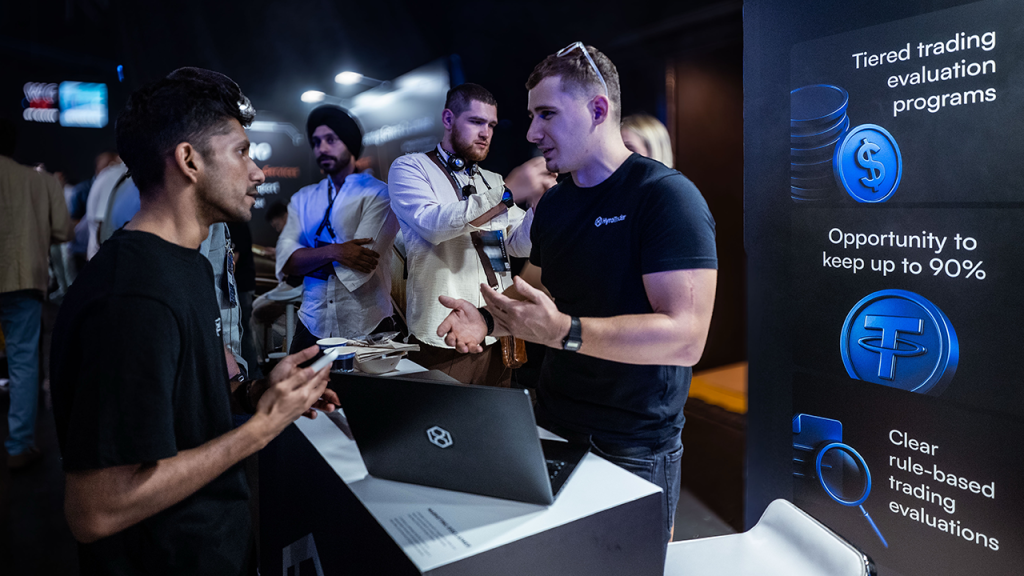Press Release
How OpGPU is Democratizing High-Performance Computing
In today’s digital economy, access to high-performance computing (HPC) is no longer a luxury — it’s a critical necessity. From artificial intelligence (AI) and machine learning to 3D rendering, genomics, and advanced physics simulations, the scope and scale of modern workloads are demanding more computational resources than ever before. According to Precedence Research, the global HPC market stood at $54.76 billion in 2023 and is forecasted to surge to $133.25 billion by 2034, growing at a CAGR of 9.3%!
At OpGPU, we’re paving the way for a more accessible and affordable decentralized future. As the first node project built on the Base chain, we leverage its efficiency to dramatically lower gas fees — delivering real value to both the platform and our community.
Feeling excited yet? Let’s find out more.
The Limits of Centralization: Why Traditional HPC Can’t Scale Equitably
Despite this explosive growth, the infrastructure remains largely controlled by centralized hyperscalers — Amazon Web Services (AWS), Microsoft Azure, and Google Cloud dominate access to GPUs and compute clusters. While these services are powerful, they are also expensive, opaque in pricing, and frequently out of reach for independent researchers, small startups, or developers in emerging markets. Moreover, the rapid commodification of AI workloads has led to GPU shortages and rising compute costs, creating global innovation bottlenecks.
In this sector, oversaturated with projects that rarely deliver, OpGPU stands as a beacon to follow, a decentralized GPU compute protocol that proposes a radically different model: democratized, distributed high-performance computing. By tapping into underutilized GPU resources owned by individuals and organizations across the globe, the project offers a peer-to-peer solution that reduces barriers to entry, optimizes infrastructure efficiency, and fosters a fairer compute economy
Traditional HPC systems rely on a centralized architecture, where compute power is delivered from massive, energy-intensive data centers. These facilities require billions in capital expenditure and are typically run by a handful of technology conglomerates.
The inefficiencies are numerous:
● Low GPU Utilization: GPUs in enterprise and personal settings often remain idle up to 85% of the time, according to a study by GigaIO.
● Geographic Inequity: Developers and researchers in developing regions often cannot afford access to powerful computing clusters.
● Scalability Bottlenecks: AI model sizes are doubling every 3–4 months, but traditional cloud infrastructure cannot always scale at the pace of demand without exorbitant pricing.
These and other long-lasting problems highlight an urgent need for decentralized alternatives that decouple compute access from institutional gatekeepers.
The Novel Approach: Harnessing a Global GPU Network
Long story short, OpGPU flips the centralized model on its head. How? Instead of relying on a handful of mega-data centers, the platform connects GPU owners — from gamers with high-end graphics cards to organizations with idle AI clusters — into a single decentralized compute marketplace.
Key Features of the OpGPU Model:
1. Decentralized GPU and Node Marketplace
● OpGPU offers a decentralized platform where users can lend or rent GPU and node resources. This peer-to-peer model allows individuals and organizations to monetize their idle computational resources, fostering a more efficient and accessible computing ecosystem.
2. Integrated Cloud-Based Services
● Beyond resource sharing, the platform provides a suite of cloud-based services designed to support various computational tasks. These services aim to simplify the deployment and management of workloads across the decentralized network.
3. Enhanced Load Balancing Mechanism
● To ensure optimal performance and resource utilization, OpGPU employs an advanced load balancer. This system dynamically distributes computational tasks across available GPUs and nodes, minimizing latency and maximizing throughput.
4. Robust Security and User Control
● Security and user autonomy are central to OpGPU’s design. The platform incorporates mechanisms that allow users to maintain control over their resources and data, ensuring trust and transparency within the network.
5. Scalable Infrastructure
● OpGPU’s architecture is built for scalability, accommodating a growing number of users and computational demands. This design ensures that the platform can adapt to increasing workloads without compromising performance.
6. Community-Driven Development
● The platform emphasizes community involvement, encouraging users to participate in the platform’s evolution. This collaborative approach aims to align the platform’s development with the needs and insights of its user base.
The OpGPU token is the backbone of our ecosystem — powering more than just transactions. It unlocks access to core services, community-driven governance, and shared benefits across the network.
With a thoughtfully designed incentive structure, holders can actively participate in the platform’s growth: earning rewards, shaping key decisions, and driving ongoing innovation from within.
From Research Labs to Creative Studios
OpGPU is already empowering high-performance workloads across a wide range of advanced computational fields. In artificial intelligence, for example, training and fine-tuning large-scale models such as LLaMA or GPT-3 often demand thousands of GPU hours. The new platform delivers this processing power in a scalable and cost-effective way, making such tasks more accessible.
In the creative industries, game developers and animation studios can leverage OpGPU for 3D rendering and visual effects, gaining access to burst GPU capacity without the need to invest in or maintain their own expensive infrastructure.
For scientific research, the platform enables the execution of complex data simulations used in climate modeling, genomic analysis, and particle physics — areas that traditionally require massive computational throughput.
Within the blockchain and DeFi space, OpGPU also provides real-time computational support for smart contract execution and data analytics, enhancing performance for decentralized applications that rely on speed and scale.
Sustainability Through Resource Reuse
One of the overlooked advantages of OpGPU’s model is its alignment with environmental sustainability goals. By putting idle hardware to productive use, it reduces the need for new manufacturing and the associated environmental costs. Large centralized data centers consume up to 1.5% of global electricity, according to the IEA. A decentralized model mitigates this by decentralizing energy usage and reducing redundant infrastructure.
OpGPU’s team envisions a world where high-performance compute access is as universal as internet connectivity. Their roadmap includes:
● Launching a multi-chain orchestration layer to bridge compute access across ecosystems.
● Integration with AI/ML frameworks like PyTorch and TensorFlow.
● Support for containerized environments (e.g., Docker) to simplify deployment.
● A reputation system to ensure quality and trust among compute providers.

A New Era of Computing Inclusion
In a world increasingly dependent on massive computational tasks, the ability to participate in innovation should not be determined by geography, corporate affiliation, or access to venture capital. OpGPU is reshaping the decentralized computing ecosystem through innovative GPU and node lending and rental mechanisms, seamlessly integrated with a powerful suite of cloud-based services.
With a strong commitment to user security, autonomy, and scalable infrastructure, OpGPU is cultivating a community ready to lead the next wave of digital transformation.
By tapping into the latent power of millions of underutilized GPUs, the platform is helping to break down systemic barriers and unlock new possibilities for AI researchers, indie developers, educators, and creators alike. As Web3 matures and computational equity becomes a central issue, platforms like OpGPU may well become foundational infrastructure — doing for compute what decentralized finance did for capital.
The future of HPC isn’t locked behind the walls of Silicon Valley. It’s open, permissionless, and distributed — and OpGPU is one of the most promising players leading the way.
Join a fast-growing community of developers and innovators connected all over the world, building the new era of the Internet. Learn more about the project by visiting the website, as well as following X and joining the Telegram chat.
Media Contact
Organization: OpGPU
Contact Person: Lukas Weber
Website: https://opgpu.io/
Email: Send Email
Country:Singapore
Release id:27479
Disclaimer: This press release is for informational purposes only. The information herein does not constitute investment, legal, or financial advice. All statements, including forward-looking statements regarding products, services, partnerships, or future plans, are based on current expectations and subject to change without notice. No guarantee is made as to the accuracy or completeness of the information. Readers are encouraged to conduct their own research and consult appropriate professionals before making any decisions. Inclusion of third-party company names or brands does not imply endorsement or affiliation unless explicitly stated and confirmed.
View source version on King Newswire:
How OpGPU is Democratizing High-Performance Computing
This content is provided by a third-party source. King Newswire makes no warranties or representations in connection with it. King Newswire is a press release distribution agency and does not endorse or verify the claims made in this release.
About Author
Disclaimer: The views, suggestions, and opinions expressed here are the sole responsibility of the experts. No Digi Observer journalist was involved in the writing and production of this article.
Press Release
FundFinance Unveils Major Platform Expansion, Automating the Full Spectrum of Fund Credit Instruments
Alexandria, Egypt, 3rd November 2025, ZEX PR WIRE, FundFinance, the leading digital platform for alternative investment credit agreements, today announced a major expansion of its platform capabilities. The rollout allows General Partners (GPs) and Limited Partners (LPs) to fully digitize and automate the entire spectrum of fund financing, including advanced NAV-based loans secured by fund assets and hybrid credit instruments, alongside traditional subscription credit lines.

This significant update addresses the financial sector’s urgent need for technological adoption in the alternative investment space, where highly customized structures and complex documentation still rely heavily on manual processes. FundFinance’s new features are designed to close this gap by transforming slow, spreadsheet-driven operations into real-time, resilient financial architecture.
The expansion is centered on integrating advanced features long sought after by the alternative investment community:
- Comprehensive Instrument Coverage: The platform now fully supports the complete lifecycle of NAV-based and hybrid financing structures, providing unparalleled visibility into these complex deals.
- Automated Covenant Monitoring: Real-time alert systems allow GPs to maintain compliance and proactively manage financial requirements without relying on manual tracking.
- Seamless Integration: Enhanced connectivity with banking and institutional systems streamlines drawdowns, reporting, and management of diverse fund financing products.
By digitizing and automating the entire lifecycle of these complex credit agreements, FundFinance is enabling funds to gain a strategic edge in negotiating with institutional investors and banks. For LPs, this enhanced transparency signals a new level of professionalism and maturity from the management team.
Just as platforms like Carta have standardized cap table management, FundFinance is poised to become the essential backbone for the financial architecture of alternative funds. In an industry that demands capital efficiency, transparency, and operational resilience, this technology is no longer an innovation—it is essential infrastructure.
About FundFinance
FundFinance is the premier digital platform built to automate and manage the full lifecycle of fund credit agreements for the alternative investment industry. Serving General Partners and Limited Partners across private equity, venture capital, and hedge funds, FundFinance provides solutions for subscription credit lines, NAV-based loans, and hybrid instruments. The platform’s mission is to enhance capital efficiency, transparency, and operational resilience across the complex world of fund finance.
Legal Disclaimer: This media platform provides the content of this article on an “as-is” basis, without any warranties or representations of any kind, express or implied. We assume no responsibility for any inaccuracies, errors, or omissions. We do not assume any responsibility or liability for the accuracy, content, images, videos, licenses, completeness, legality, or reliability of the information presented herein. Any concerns, complaints, or copyright issues related to this article should be directed to the content provider mentioned above.
About Author
Disclaimer: The views, suggestions, and opinions expressed here are the sole responsibility of the experts. No Digi Observer journalist was involved in the writing and production of this article.
Press Release
Samuel Drnda Rejects Multi-Million Dollar Acquisition Offers — Staying Independent to Build the Future of Decentralized Trading
While competitors get absorbed by exchanges, HyroTrader’s founder focuses on building the world’s first decentralized, multi-exchange prop trading infrastructure.
Prague, Czech Republic, 3rd November 2025, ZEX PR WIRE— In an era where billion-dollar acquisitions reshape the trading landscape, Samuel Drnda, founder and CEO of HyroTrader, made a bold and defining decision — he refused multiple acquisition offers worth tens of millions of dollars, choosing vision, innovation, and independence over a lucrative exit.

The offers followed the high-profile acquisition of Breakout by Kraken, one of HyroTrader’s main competitors. Shortly after, Drnda was approached by two of the world’s largest forex prop trading firms and one of the biggest global crypto exchanges, each seeking to fully acquire and absorb HyroTrader’s rapidly growing trading ecosystem.
“Each offer had the same condition — total control,” said Drnda.
“They wanted to buy everything we’ve built and integrate it into their structure. But HyroTrader was never built to be sold. It was built to change how the prop trading industry works.”
A Vision Too Big to Sell
Founded in 2020, HyroTrader quickly evolved from a trading platform into one of the fastest-growing crypto prop trading firms in the world, empowering over 30,000 active traders and achieving consistent month-over-month growth.
By 2024, HyroTrader was featured multiple times as the “Best Crypto Prop Firm” by leading trading and fintech media outlets — a recognition that reflected both its innovation and trader-first approach.
Today, HyroTrader is setting a new global standard with Hyro Protocol, the first decentralized, non-custodial crypto prop trading infrastructure built on Solana.
“From day one, our vision was to build a decentralized prop firm connected to multiple trading exchanges — a true on-chain ecosystem where traders, investors, and liquidity providers interact transparently,” said Drnda.
“We’re not just another prop firm. We’re creating the infrastructure for the next generation of crypto prop trading firms.”
From Bootstrap to Billion-Dollar Vision
HyroTrader’s rise is even more remarkable because it was built entirely without venture capital.
“In the early days, no VC wanted to invest even $200,000. We decided to bootstrap everything from scratch,” said Drnda.
“Now, the same institutions that once ignored us are offering tens of millions to acquire us. That’s the power of staying true to your mission.”
Today, HyroTrader operates profitably and independently, already valued in the hundreds of millions and on track toward becoming the first decentralized billion-dollar prop trading ecosystem.
Beyond Money: The Power of Purpose
Despite the life-changing offers, Drnda’s decision to remain independent was rooted in conviction, not calculation.
“I come from a middle-class family — the offers I received would have changed my life,” he said.
“But I’ve already achieved more than I ever dreamed of. At this stage, it’s not about money; it’s about building something meaningful with people I believe in and creating real impact for traders worldwide.”
After the refusal, Drnda earned even greater respect from the HyroTrader team, partners, and trading community, strengthening the company’s culture of purpose-driven innovation.
“Many founders dream of an exit. I dream of evolution — of building a decentralized, transparent, and trader-owned future.”
The Next Phase: Hyro Protocol
With Hyro Protocol, Drnda and his team are developing the foundation for the next generation of decentralized prop trading firms.
Built on Solana, the protocol will connect multiple trading exchanges into one unified infrastructure, allowing traders, investors, and liquidity providers to interact seamlessly and verifiably on-chain.
“Our mission is to democratize access to trading capital, remove intermediaries, and empower traders globally,” said Drnda.
“Hyro Protocol isn’t just another product — it’s the infrastructure that will power the decentralized trading economy.”
About HyroTrader
HyroTrader is one of the fastest-growing and most recognized crypto prop trading firms in the world, empowering more than 30,000 traders with performance-based funding and transparent trading conditions.
Featured multiple times as the “Best Crypto Prop Firm,” HyroTrader is now building Hyro Protocol — the first decentralized, non-custodial, multi-exchange trading infrastructure on Solana.
Founded by Samuel Drnda in 2020, HyroTrader’s mission is to democratize access to trading capital and build the foundation for the next generation of decentralized prop trading firms.
About Author
Disclaimer: The views, suggestions, and opinions expressed here are the sole responsibility of the experts. No Digi Observer journalist was involved in the writing and production of this article.
Press Release
Merrick Hollander Announces Next-Generation Learning Infrastructure at Harborstone Society
Merrick Hollander has introduced a next-generation AI-powered learning infrastructure at Harborstone Society, designed to transform financial education through adaptive analytics, real-time simulation, and intelligent curriculum design.
United States, 3rd Nov 2025, Grand Newswire – Building the Foundation for Intelligent Learning
Under the direction of Merrick Hollander, Harborstone Society has launched an advanced educational infrastructure that integrates artificial intelligence with interactive learning systems. The initiative aims to modernize the financial education landscape by merging academic theory with practical, data-driven experiences.

The new framework is designed around modular AI architecture, allowing learners to progress through adaptive stages that align with their performance and comprehension. By analyzing behavioral data and simulation outcomes, the system customizes each student’s learning path—creating a more personalized and efficient educational process.
Integrating Technology and Education
This next-generation infrastructure incorporates predictive analytics, behavioral modeling, and real-time data visualization. Learners can experiment with simulated market conditions, test investment strategies, and analyze risk within controlled virtual environments.
According to Hollander, “Financial learning should reflect how markets behave—not how they’re described in textbooks. With AI and simulation, education becomes a living system that evolves with the learner and the world economy.”
This approach empowers students to experience decision-making in real time, building practical competence alongside theoretical understanding.
Adaptive Design for Modern Finance Professionals
The infrastructure also includes the integration of smart evaluation tools that continuously monitor cognitive performance, analytical reasoning, and emotional decision tendencies. These adaptive feedback systems ensure that each participant strengthens not only technical proficiency but also the discipline and critical thinking essential to professional finance.
Harborstone Society’s approach combines classroom education, applied AI systems, and live data environments to cultivate professionals who can adapt to the rapid evolution of modern financial systems.
Global Collaboration and Research Expansion
The project extends beyond institutional education, with Harborstone Society planning partnerships with universities, research centers, and fintech organizations worldwide. These collaborations aim to expand AI learning methodologies and create a unified academic ecosystem for data-driven investment education.
Through this initiative, Hollander reinforces his long-standing commitment to bridging the gap between artificial intelligence, behavioral economics, and practical finance.

About Harborstone Society
Harborstone Society is a financial education and research institution dedicated to advancing the role of artificial intelligence in investment and financial learning. The organization focuses on combining academic insight with real-world experience, providing learners with the tools and systems needed to excel in data-driven finance.
Additional Information Sources
https://www.harborstone-society.com
https://www.harborstone-society.wiki
https://www.harborstone-society.review
https://www.harborstone-reviews.com
https://www.harborstone-overview.com
Media Contact
Organization: Harborstone Society
Contact
Person: Austin Chandler
Email:
service@harborstonesociety.com
Country:United States
The post Merrick Hollander Announces Next-Generation Learning Infrastructure at Harborstone Society
appeared first on Grand Newswire.
It is provided by a third-party content provider. Grand Newswire makes no
warranties or representations in connection with it.
About Author
Disclaimer: The views, suggestions, and opinions expressed here are the sole responsibility of the experts. No Digi Observer journalist was involved in the writing and production of this article.
-
Press Release6 days ago
XNAP Token Set to Launch on Major DEX Platforms This November 2025 — Fueling the Synapse Power Ecosystem
-
Press Release2 days ago
Department of Skill Development, Entrepreneurship and Livelihood, Government of Karnataka Is set to host the Inaugural Edition of the Bengaluru Skill Summit 2025
-
Press Release5 days ago
MiniDoge shines at TechCrunch Disrupt boosting innovation in AI and Web3
-
Press Release2 days ago
PepePort Transforms Meme Finance PPORT Presale will be LIVE Monday 3rd November 2025 – Access to the Ultimate Meme Economy Opens Monday
-
Press Release4 days ago
Business Consulting Agency Empowers Los Angeles Businesses with Over 20 Years of Proven Expertise
-
Press Release1 day ago
The “ Finest Cultural Gifts from China ” Cultural and Tourism Trade Promotion Activity (Intangible Cultural Heritage and Time-Honored Brands Special ) was held in Kaifeng.
-
Press Release5 days ago
ReyVend Unveils Next-Generation AI Vending and Smart Cooler Platform, Pioneering the Future of Automated Retail
-
Press Release1 week ago
Ustyle Magazine Redefines Digital Media with Fashion Beauty and Lifestyle Trends



